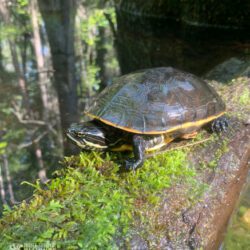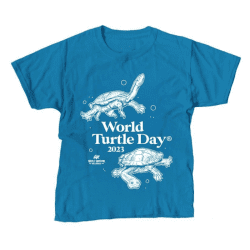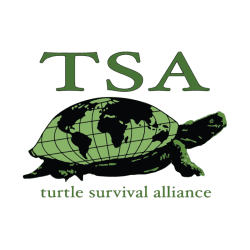Day 4 finally rolled around and it was time to sit back and listen to presentations on some of what are considered model programs for turtle conservation in the region.  First up is the Cuc Phuong Turtle Conservation Center in Vietnam, perhaps the best known and respected of all the regional centers due to its longevity.  The presentation was done by the young man in charge now, Hoan Van Thai. This was his first ever public presentation before an international audience and for a shy person, he did an admirable job.  He was followed by Shailendra Singh, TSA Turtle Conservation Coordinator, who presented a comprehensive 5-year overview of the Batagur program on the Chambal River Sanctuary in India.  This program is impressive in its scope and the number of hatchling Batagur (two species) that have been hatched and released (37,000 for B. dhongoka alone) is significant.  Many other components are involved including headstarting, local awareness and poacher conversion.
Gary Ades, Director of Animal Conservation Programs for Hong Kong’s Kadoorie Farm & Botanic Garden, presented a fine summary of their turtle program and the number of turtles they rescue from the trade and then re-home is amazing.¬† Their commitment to humane handling procedures has meant the difference between life and death to countless untold thousands of rescued chelonians.¬† Lu Shunquing (WCS) presented an overview of the bold efforts to breed the last¬†two¬†Rafetus¬†in China and he acknowledges the contributions of the many organizations that have contributed to this program. Though still unsuccessful after three¬†years, the husbandry advances made so far bodes well for 2011. Kalyar Platt, TSA’s new turtle conservation coordinator for Myanmar, presented on the joint WCS / TSA program, highlighting the efforts to conserve two critically endangered endemic species, the Burmese roof turtle and star tortoise.¬† The new facilities recently built by the TSA for both were shown, as well as plans for new facilities for endemic softshells, Arakan forest turtles and a rescue facility in Lashio.¬† Jim Juvik presented for the Turtle Conservancy and outlined a plan for integrating¬†in situ¬†conservation with¬†ex situ¬†captive breeding.
The afternoon session began with a wrap up of the CITES recommend species and vigorous discussion ensued over the merits of listing various species. This is a controversial topic because so much of the trade is illegal, underground and not monitored by CITES. Concluding the workshop is a group review of all the conservation actions that have been recommended for the most threatened species, and we are challenged to rank the top three in priority, based on their importance in preventing extinction.
We wrap up the workshop, tired and exhausted.  Over the past four days, we have heard some sobering and depressing information about the threats, mainly trade, to Asian turtles.  In conclusion, I asked the group whether they were more or less optimistic now than before the workshop. Amazingly, the vast majority of participants expressed, by show of hands, that they were MORE optimistic now than before.  I feel like this is the most encouraging thing I have heard over the past four days.
 








